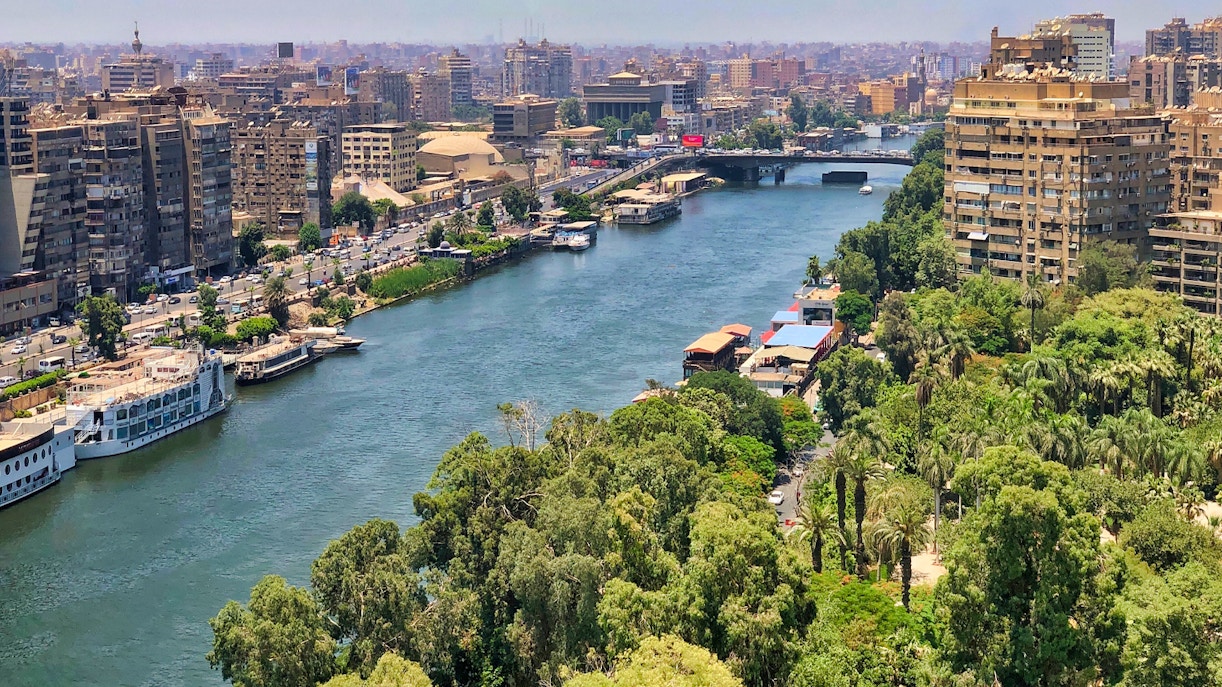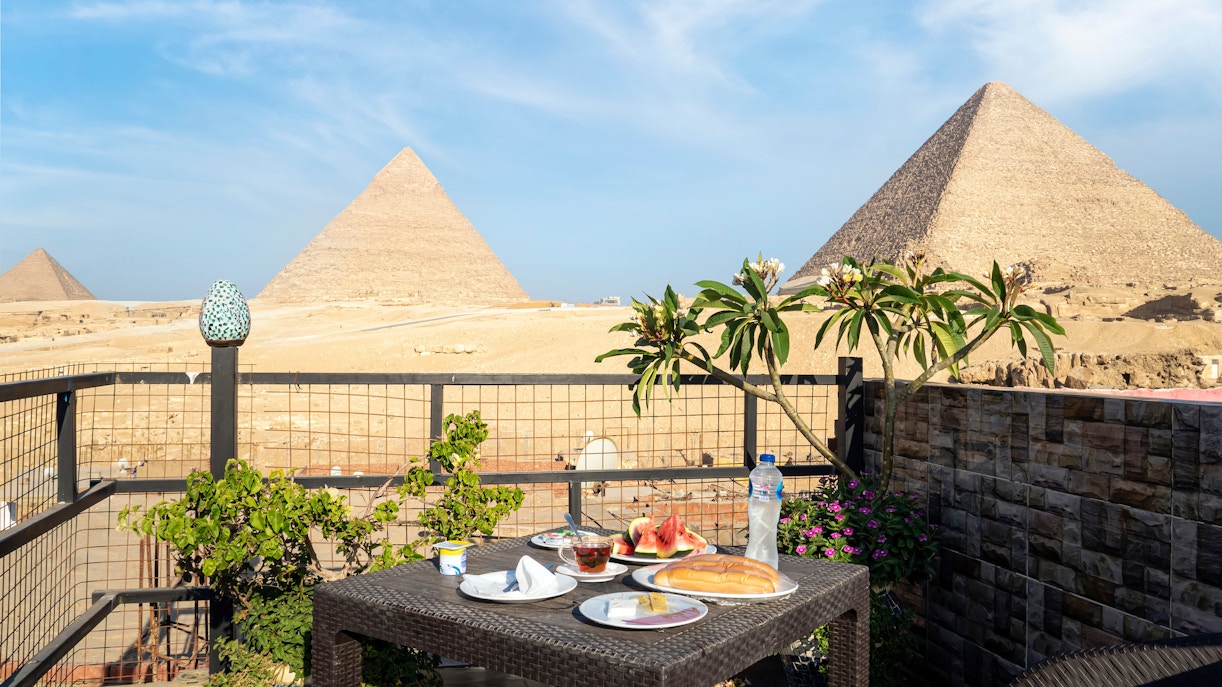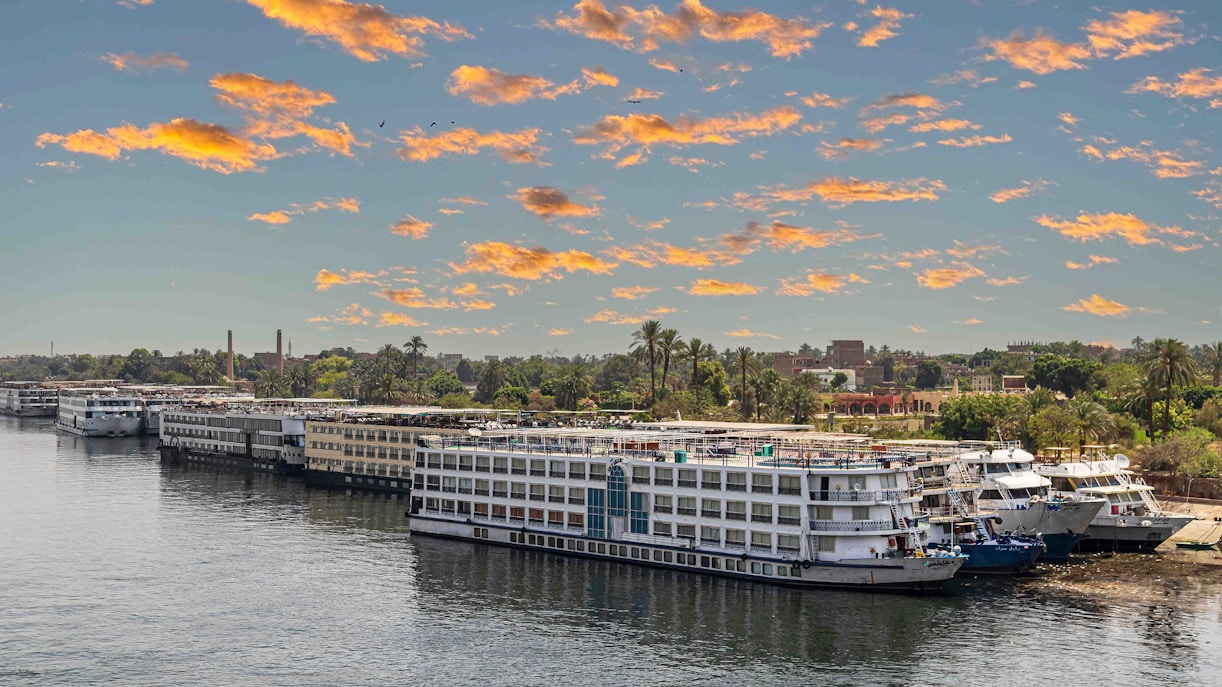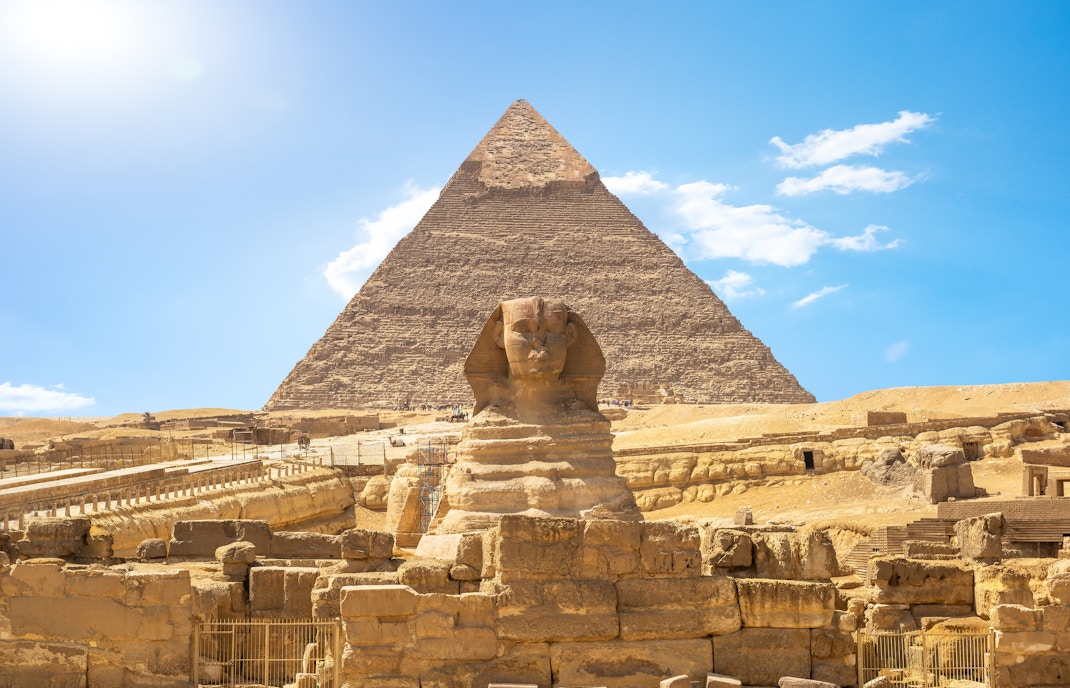Also Known As: TheFather of African Rivers, In Arabic, it is called Baḥr Al-Nīl or Nahr Al-Nīl.
Point of Entry: The northern limits of Lake Nasser in Aswan.
Point of Origin: The Nile River is formed from two major tributaries: the White Nile and the Blue Nile. The White Nile originates at Lake Victoria, which is located in modern-day Uganda, Tanzania, and Kenya. The Blue Nile originates at Lake Tana in Ethiopia.
Types of Cruises: Dinner Cruises, Lunch Cruises, Sightseeing Cruises, and Multi-day Cruises.
Popular Sights on the Nile:
- Left Bank- Valley of the Kings, Colossi of Memnon, Temple of Hatshepsut, Ramesseum, Medinet Habu, Tombs of the Nobles, Deir el-Medina
- Right Bank- Karnak Temple, Luxor Temple, Luxor Museum, Mummification Museum, Avenue of Sphinxes, Temple of Mut, Temple of Amun










